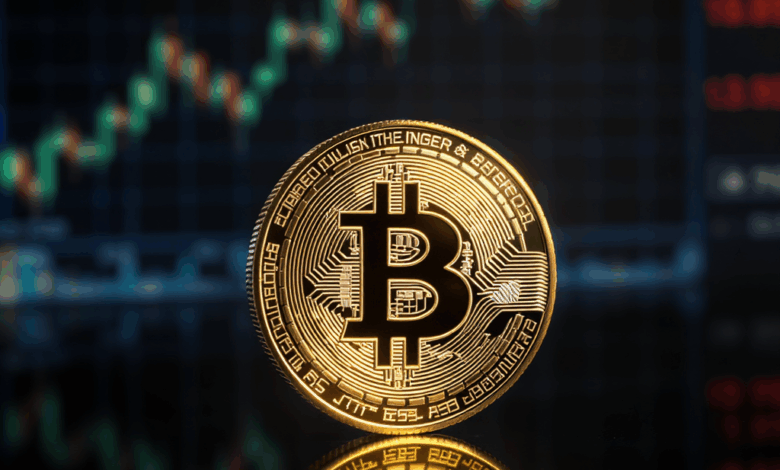Is Bitcoin’s 2024 Surge Just a Mirage? Unpacking the Price Prediction Puzzle

Have you ever caught yourself wondering why Bitcoin’s price predictions seem to swing wildly between sky-high optimism and sobering caution? I remember sitting down last spring, scrolling through a flood of forecasts—some painting Bitcoin at $650,000 by year-end, others warning it might plunge below $20,000. It felt like trying to read the future through a kaleidoscope, where every turn reveals a different pattern. Why such disparity?
Let’s consider the April 2024 halving event—the moment when Bitcoin miners’ rewards were cut in half. Historically, these halvings have been whispered about as catalysts for price surges, and indeed, some analysts, like those at Bitfinex, predicted a staggering 160% rise within a year, potentially pushing Bitcoin beyond $150,000. But is this narrative too neat? After all, markets are more than just supply and demand curves; they pulse with human behavior, regulatory twists, and technological shifts.
What complicates the picture further is institutional adoption. The early 2024 approval of U.S. spot Bitcoin ETFs opened floodgates for serious capital inflows. Institutional players, once on the sidelines, stepped in, signaling confidence—or was it fear of missing out? Yet, regulatory uncertainties linger. The Federal Reserve’s monetary policy, especially potential interest rate cuts, could sway risk appetite dramatically. I found myself asking: can these macroeconomic tides be reliably forecasted, or do they inject another layer of unpredictability?
Diving into the prediction models, I stumbled upon fascinating approaches. The Quantile Model, for example, offers a statistical lens suggesting a 50% chance Bitcoin might reach $1 million by 2034—a humbling counterpoint to the most bullish forecasts. Meanwhile, the Power Law Model, boasting 95.3% accuracy, estimates a more modest peak around $170,000 by late 2025. Then there’s CryptoMamba, leveraging state-space architectures to capture long-range trends—a reminder that the tools we use shape the stories we tell about Bitcoin’s future.
But beyond numbers, what about us, the investors and observers? A recent Deutsche Bank survey revealed a split psyche: over half see cryptocurrencies as future staples, yet a third brace for significant price dips. This ambivalence echoes my own oscillation between excitement and skepticism.
So, where does this leave us? Should we lean into the hype of halving-fueled booms, or brace for volatility amplified by regulatory shifts and market psychology? Perhaps the real question is: how do we navigate investing when the map itself is constantly redrawn by new data, models, and sentiments?
As we watch Bitcoin’s dance through 2024, maybe the most valuable insight isn’t a precise price forecast, but learning to think alongside the market’s complexity—embracing uncertainty as part of the journey rather than a problem to solve. What do you think this means for your own approach to cryptocurrency? Could this be the moment to rethink not just Bitcoin’s price, but how we envision financial futures altogether?
Navigating the Maze of Bitcoin Price Predictions in 2024
I can’t help but recall the spring when I first dove deep into Bitcoin forecasts for 2024. The spectrum was dizzying—on one end, voices like Cathie Wood’s ARK Invest boldly envisioned Bitcoin soaring to $650,000 by year-end; on the other, nearly a third of surveyed investors braced for a plunge below $20,000. It felt less like a forecast and more like a dialogue between hope and fear. What drives such a kaleidoscope of predictions?
The Halving Event Catalyst or Just Noise?
April 2024 marked Bitcoin’s halving—a moment when miners’ rewards were sliced in half. Traditionally, this event has been a harbinger of scarcity, often followed by price rallies. Bitfinex analysts predicted a 160% surge post-halving, possibly pushing Bitcoin beyond $150,000. Yet, I wonder: can we view halving as a simple supply shock? Markets are rarely that straightforward. The interplay between scarcity, demand, and human psychology complicates the narrative. Is it the halving itself or the collective belief in its power that moves markets?
Institutional Footprints and Regulatory Ripples
The approval of U.S. spot Bitcoin ETFs early in 2024 ushered in institutional investors who had previously been hesitant. Suddenly, Bitcoin wasn’t just a fringe asset; it was a contender in mainstream portfolios. This influx of capital hints at growing confidence, but does it also bring volatility tied to institutional risk appetites?
Overlaying this is the regulatory landscape. The U.S. Federal Reserve’s stance—particularly potential interest rate cuts—could either fuel risk-on behavior, lifting assets like Bitcoin, or tighten liquidity, suppressing prices. These macroeconomic levers add layers of unpredictability. How much can we really anticipate these shifts, and how do they interact with crypto’s unique market dynamics?
Models That Tell Different Stories
Exploring prediction models reveals how much our tools color our forecasts. The Quantile Model, developed by Sina Gopal and Plan C, grounds expectations statistically, suggesting a 50% chance Bitcoin hits $1 million by 2034—tempering more exuberant claims.
Meanwhile, the Power Law Model, boasting over 95% accuracy historically, anticipates a peak near $170,000 by late 2025. And then there’s CryptoMamba, a sophisticated state-space model capturing long-range dependencies in market data, which promises refined predictions through machine learning techniques.
Each model brings insights, yet none offers certainty. They remind me that forecasting is as much about interpreting data as it is about acknowledging the unknown.
The Human Element: Sentiment and Skepticism
A Deutsche Bank survey revealed a fascinating divide: over half of respondents see cryptocurrencies as future pillars of finance, yet a significant minority expect steep price drops. This ambivalence mirrors my own oscillation—caught between excitement about innovation and caution about volatility.
We, as investors and observers, inject emotion and expectations into the market, creating feedback loops that no model can fully capture. Could this collective psychology be the wild card that defies even the most robust forecasts?
So, What Does This Mean for Us?
Perhaps the real lesson here isn’t in pinpointing Bitcoin’s price but in embracing the complexity of its ecosystem. The halving, institutional flows, regulatory shifts, and prediction models all weave a tapestry that’s as intricate as it is unpredictable.
As we watch Bitcoin’s journey through 2024 and beyond, how might this uncertainty shape our approach—not just to cryptocurrency, but to financial futures in general? Are we prepared to navigate a landscape where data, emotion, and unforeseen forces interplay?
Maybe the question isn’t “Where will Bitcoin be next year?” but “How will we think about value, risk, and innovation in a world that refuses easy answers?”
What are your thoughts on this dance between prediction and unpredictability? Could this be the moment to rethink not only Bitcoin’s trajectory but our own perspectives on the markets that shape our lives?

Looking back at the whirlwind of Bitcoin price predictions throughout 2024, it strikes me how much this saga reflects the blend of data, human psychology, and uncertainty shaping not just cryptocurrencies but financial markets at large. The halving event, often hailed as a pivotal moment, reminds us that scarcity narratives gain power through collective belief as much as through supply mechanics. Institutional entry and regulatory shifts add layers that models alone can’t untangle, while diverse forecasting approaches—from the Quantile Model’s cautious probability to the Power Law’s historical patterns—underscore the limits and possibilities of prediction.
What we gain from this exploration is not a definitive answer but a richer understanding: Bitcoin’s future is a mosaic of factors, each piece influencing the whole in unpredictable ways. This invites us to reconsider how we approach investing—not as a quest for certainty, but as a practice of navigating complexity with curiosity and humility.
So, what can you do now? Start by reflecting on your own relationship with risk and innovation. Explore different models and viewpoints without expecting a single truth. Stay informed about regulatory and macroeconomic developments, but also acknowledge the emotional currents that ripple through markets. Most importantly, engage with this evolving landscape as a participant in a collective conversation rather than a passive receiver of forecasts.
Looking ahead, Bitcoin’s journey will likely continue to defy simple narratives, challenging us to rethink value, trust, and foresight in finance. Its story is not just about price points but about how we learn to live with uncertainty and change.
What do you think this means for your own financial perspective? Could embracing unpredictability be the real key to finding opportunity in this ever-shifting market? If this reflection resonated with you, maybe it’s time to test these ideas in your own investment approach—and see where the journey takes us all.





